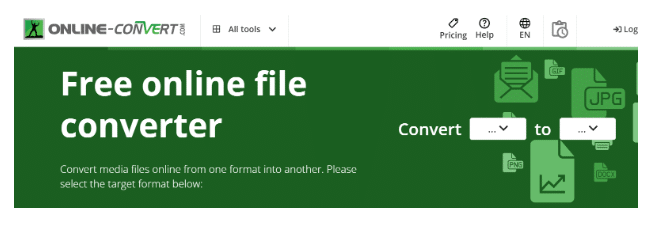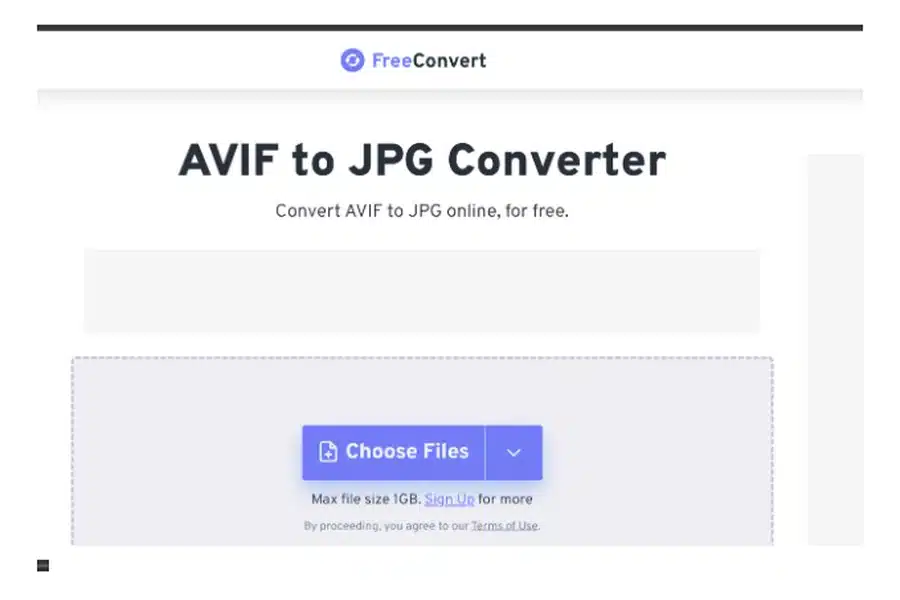In today’s digital landscape, image formats play a critical role in website performance, user experience, and storage efficiency. With the emergence of newer formats such as AVIF (AV1 Image File Format) alongside the time-tested JPG (Joint Photographic Experts Group), many users and web developers face the decision of whether to convert AVIF files to JPG. This article explores the key differences between these formats, discusses the reasons for converting AVIF to JPG, and offers practical guidance on the conversion process. We delve into technical details, usability factors, and future-proofing strategies to help you make informed decisions about image management.
Understanding Image Formats: AVIF and JPG
AVIF is a modern image format that leverages the AV1 video codec to achieve higher compression efficiency and superior image quality. It supports advanced features such as high dynamic range (HDR), 10-bit color depth, and alpha transparency. These characteristics make AVIF an appealing option for high-quality imagery with significantly reduced file sizes. Despite these benefits, the adoption of AVIF remains limited due to varying levels of support across browsers and devices.
Conversely, JPG has been the industry standard for nearly three decades. Developed in the early 1990s, JPG uses lossy compression to reduce file sizes and has widespread compatibility with web browsers, mobile devices, and image editing software. Its long-standing presence and extensive support across platforms have cemented JPG’s status as a reliable and universally accepted image format.
Differences Between AVIF and JPG
The primary differences between AVIF and JPG lie in their compression algorithms, feature sets, and compatibility. AVIF offers superior compression, often achieving up to 30–50% better compression rates than JPG while maintaining comparable or enhanced image quality. This advantage results in smaller file sizes that can improve page load times and reduce bandwidth usage. However, the advanced compression technology comes with a trade-off: not all web browsers or devices fully support AVIF, which can lead to accessibility issues for some users.
In contrast, JPG’s simplicity and broad compatibility make it a safer choice for many applications. While JPG files may be larger compared to AVIF, their universal support means that images will display consistently across all platforms. For many users and web developers, this reliability outweighs the benefits of AVIF’s advanced features.
Reasons to Convert AVIF to JPG
There are several compelling reasons to convert AVIF images to JPG, particularly when considering cross-platform compatibility, ease of file handling, and long-term accessibility.
Ensuring Cross-Platform Compatibility
While AVIF is a promising format, its adoption is still in progress. Not every browser or device has full support for AVIF images. Converting AVIF files to JPG ensures that all users, regardless of their device or browser, can view the images without issues. This is essential for maintaining a positive user experience and avoiding technical glitches that might arise from unsupported formats. (ShortPixel)
Facilitating Seamless File Handling
JPG is widely accepted by almost every image editing software, content management system, and social media platform. When working with AVIF files, users often encounter compatibility issues that require additional plugins or updates. By converting AVIF to JPG, you simplify workflows and ensure that images are easily edited, uploaded, and shared without extra complications. (Cloudinary)

Optimizing for Web Use and Performance
Even though AVIF files offer superior compression, their inconsistent support across browsers can lead to broken images or slower page load times if fallback mechanisms are not in place. Converting images to JPG guarantees that they display uniformly, thereby optimizing the visual experience for all users. Additionally, JPG files can be compressed to a level that balances quality and file size, which is crucial for web performance. (ThePlusAddons)
Reducing Bandwidth Consumption
JPG’s compression method helps in reducing file sizes while keeping the quality at acceptable levels. For websites that experience heavy traffic, reducing file sizes translates to lower bandwidth usage and faster load times. This not only improves user satisfaction but also reduces operational costs related to data transfer. (ShortPixel)
Simplifying Editing and Printing Processes
Many professional and consumer-grade image editing tools are built around the JPG format, ensuring a smoother experience when editing or printing images. While AVIF is gaining traction, its support is not as comprehensive, which can complicate tasks that require high compatibility across different software. Converting AVIF to JPG streamlines these processes, ensuring that images can be edited and printed without issues. (Webmasters StackExchange)
Ensuring Long-Term Accessibility
Given its long-standing presence and universal acceptance, JPG is considered a safe bet for archiving and long-term storage of images. Converting AVIF files to JPG helps ensure that the images remain accessible and viewable in the future, even as newer formats emerge. This long-term accessibility is critical for businesses and individuals who rely on digital archives for reference and historical documentation.
Conversion Methods: How to Convert AVIF to JPG
There are multiple ways to convert AVIF files to JPG, catering to different needs, whether it’s for individual images or bulk conversion. Below are some popular methods:
Online Conversion Tools
Online converters offer a quick and convenient way to convert AVIF files to JPG without installing software. Websites such as FreeConvert and ShortPixel provide user-friendly interfaces where you simply upload your AVIF file and download the converted JPG image. These tools often allow you to adjust the compression settings to balance quality and file size.
Dedicated Software Applications
For users who require regular or bulk conversions, dedicated software applications may be a more efficient solution. Applications like ShortPixel’s bulk converter and other image optimization software offer robust features that allow customization of compression levels, batch processing, and integration with existing workflows. These tools are especially useful for professional photographers and web developers managing large image libraries.
Command-Line Tools
Tech-savvy users often prefer command-line utilities like ImageMagick for batch processing and automation. ImageMagick supports both AVIF and JPG formats and can be easily incorporated into scripts to automate the conversion process. This method is particularly effective for developers and IT professionals looking to streamline image conversion as part of a larger automation workflow.
Expanded Description: Practical Applications and Industry Relevance
The decision to convert AVIF to JPG is not solely based on technical superiority; it is also influenced by practical applications and industry relevance. In web design and digital marketing, ensuring that images load quickly and display correctly on every device is paramount. Although AVIF offers state-of-the-art compression, its inconsistent support in older browsers and non-updated devices means that many websites choose to serve JPG images for broader accessibility.
Moreover, the vast majority of content management systems, social media platforms, and even email clients are optimized for JPG images. This widespread compatibility makes JPG a default choice in many scenarios, from e-commerce product images to high-traffic blogs. Additionally, many businesses rely on legacy systems that have not yet updated their image processing pipelines to handle newer formats like AVIF. By converting to JPG, these organizations can ensure that their digital assets remain accessible and that the overall user experience is not compromised.
From an SEO perspective, image optimization is a key factor in improving page load times and overall site performance. Faster loading pages contribute to better user engagement and can positively influence search engine rankings. The reliability of JPG in delivering consistent performance across all platforms makes it a safe and effective choice for websites aiming to optimize their images without risking compatibility issues.

Frequently Asked Questions (FAQs)
- Is there any loss of quality when converting AVIF to JPG?
Yes, the conversion process typically involves lossy compression, which may result in a slight loss of image quality. However, many converters allow you to adjust compression settings to minimize this loss, ensuring that the final JPG image retains an acceptable level of quality. (ShortPixel) - Are there free tools available for AVIF to JPG conversion?
Absolutely. Several online converters offer free services for converting AVIF to JPG. These tools are ideal for occasional conversions and do not require installation. For more frequent or bulk conversions, dedicated software might be preferable. (Cloudinary) - How does file size compare between AVIF and JPG formats?
AVIF is known for its superior compression, often resulting in smaller file sizes compared to JPG while maintaining high image quality. When you convert AVIF to JPG, the file size might increase, depending on the compression settings you choose. (ThePlusAddons) - Can all devices display AVIF images?
Not all devices and browsers currently support AVIF. Converting AVIF to JPG ensures that images are viewable across all platforms, making JPG a more universally compatible choice. (Webmasters StackExchange) - Is JPG likely to be replaced by AVIF in the future?
While AVIF offers impressive technical advantages, JPG’s entrenched compatibility and widespread use make it unlikely to be completely replaced shortly. Both formats are expected to coexist, serving different needs based on context and application. (Uploadcare) - What is the best method to convert AVIF to JPG?
The best method depends on your needs. For occasional conversions, online tools are convenient. For bulk processing and automation, command-line tools like ImageMagick or dedicated software applications offer greater control and efficiency. (ShortPixel)
Conclusion
Converting AVIF to JPG is a practical decision driven by the need for compatibility, ease of use, and long-term accessibility. While AVIF is a technically superior format offering high compression and quality features, its inconsistent support across browsers and devices can hinder the user experience. JPG, with its proven track record and universal compatibility, remains a dependable choice for web design, digital marketing, and archival purposes. Whether you are optimizing a website, managing a large image library, or simply ensuring that your images are accessible to a wide audience, converting AVIF to JPG can help you achieve consistent performance and quality. The conversion methods available—from online tools to dedicated software—allow you to choose the option that best fits your workflow and technical expertise. By understanding the strengths and limitations of each format, you can make informed decisions that enhance both the visual appeal and functionality of your digital content.


